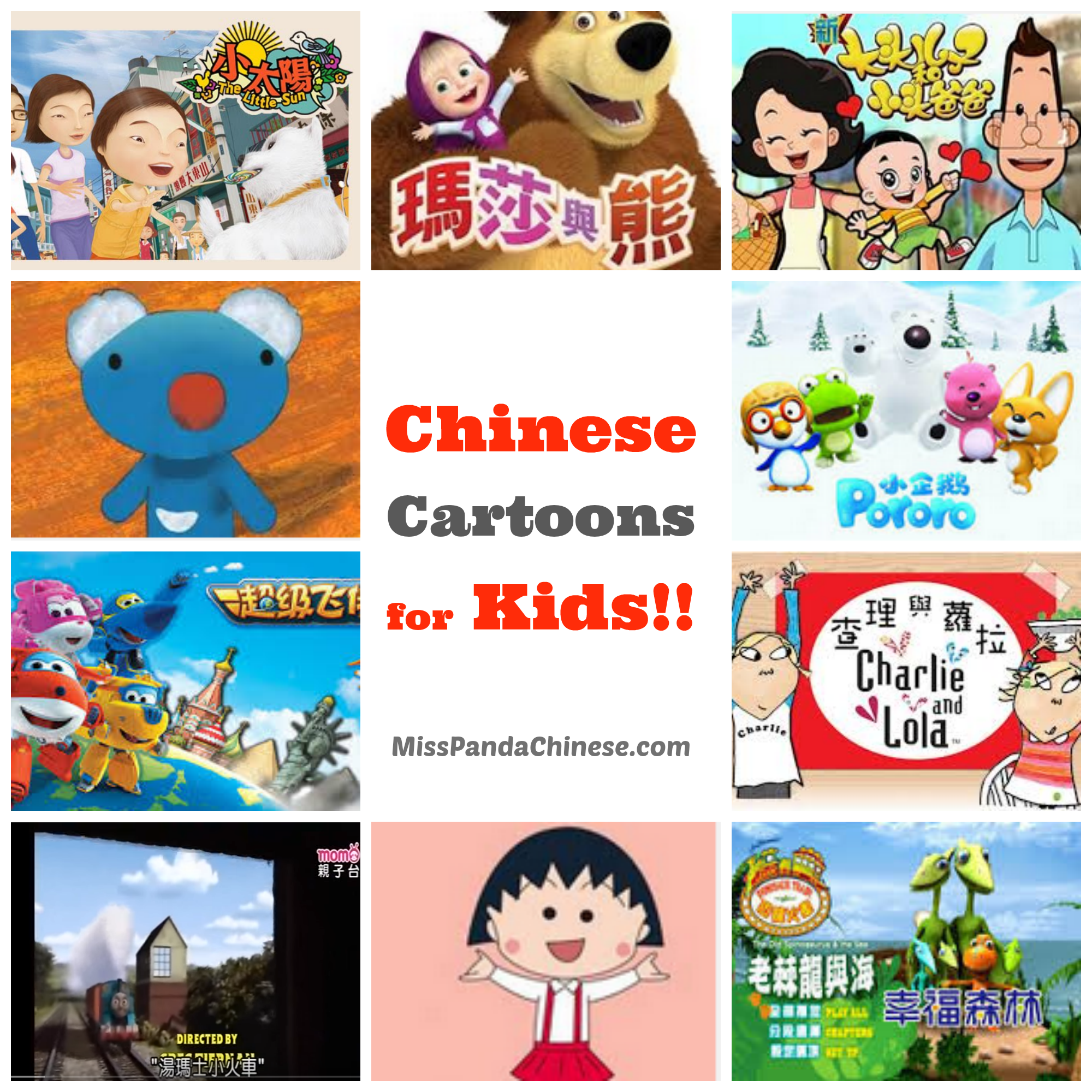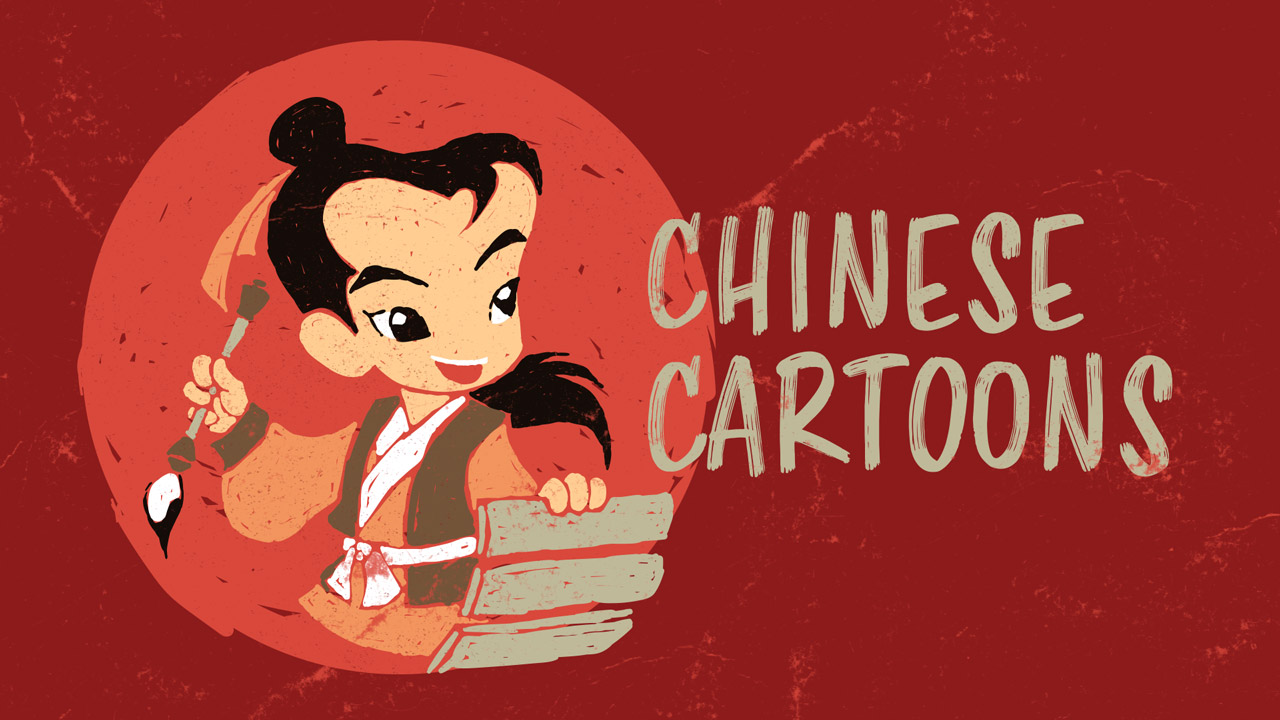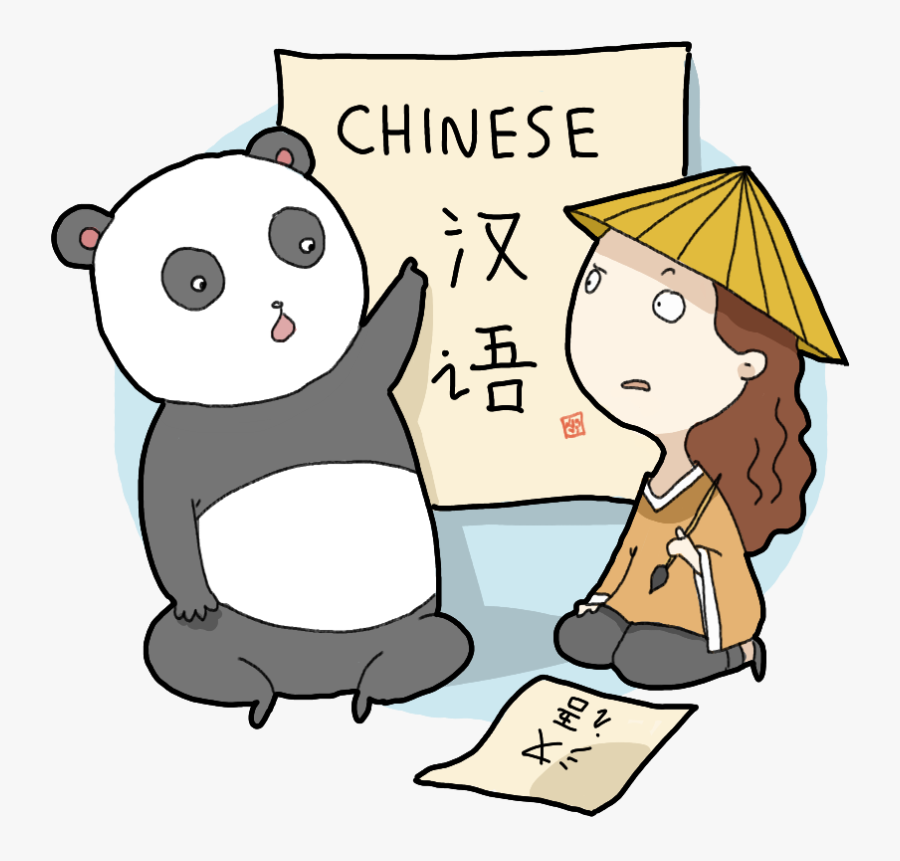Chinese language cartoons have emerged as a captivating force in the entertainment industry, captivating audiences worldwide with their unique blend of cultural significance, engaging storylines, and educational value. From their humble beginnings to their global reach, these animated creations offer a fascinating glimpse into the vibrant tapestry of Chinese culture and traditions.
The Chinese language cartoon industry has witnessed remarkable growth, with major players shaping its landscape and innovative production techniques driving its evolution. These cartoons cater to a diverse target audience, appealing to children, adults, and international viewers alike. Their content delves into common themes, relatable characters, and storylines that resonate with audiences, fostering entertainment, education, and cultural exchange.
Cultural Significance: Chinese Language Cartoons
Chinese language cartoons have a rich and storied history, dating back to the early 20th century. They have played a significant role in shaping Chinese culture, reflecting the values and traditions of the Chinese people.
Chinese language cartoons often feature themes of family, friendship, and education. They emphasize the importance of hard work, perseverance, and respect for elders. They also promote traditional Chinese values such as filial piety and collectivism.
Reflecting Chinese Culture
Chinese language cartoons often draw inspiration from Chinese mythology, folklore, and history. They feature characters and stories that are familiar to Chinese audiences, making them relatable and engaging. These cartoons help to preserve and transmit Chinese culture to future generations.
Industry Overview
The Chinese language cartoon industry is a rapidly growing sector, with a market size valued at approximately $1.5 billion in 2022 and projected to reach $2.5 billion by 2026. The industry is driven by a growing demand for high-quality animated content from both domestic and international audiences.
Major players in the Chinese language cartoon industry include Tencent Video, iQIYI, Bilibili, and Youku. These companies are responsible for producing and distributing a wide range of animated content, including original series, adaptations of popular novels and comics, and co-productions with international studios.
Production Process
The production process of Chinese language cartoons typically involves several stages, including concept development, storyboarding, character design, animation, and post-production. Concept development involves brainstorming ideas for the story, characters, and setting of the cartoon. Storyboarding is the process of creating a visual representation of the story, which helps to plan the flow and pacing of the animation.
Character design involves creating the visual appearance and personality of the characters. Animation is the process of bringing the characters and backgrounds to life through movement. Post-production involves adding sound effects, music, and other elements to the animation to enhance its overall quality.
Target Audience

Chinese language cartoons cater to a diverse audience ranging from children to adults.
Demographics, Chinese language cartoons
- Age: The primary target audience for Chinese language cartoons includes children and young adults between the ages of 5 and 25.
- Gender: Both boys and girls enjoy Chinese language cartoons, with specific shows appealing to different gender preferences.
- Location: Chinese language cartoons are popular in China, Taiwan, Hong Kong, and other regions with significant Chinese-speaking populations.
Psychographics
- Interests: Chinese language cartoons often reflect the interests and hobbies of their target audience, such as fantasy, adventure, comedy, and education.
- Values: Many Chinese language cartoons promote traditional Chinese values such as family, respect, and hard work.
- Aspirations: Chinese language cartoons often feature characters who embody the aspirations and dreams of their audience, inspiring them to pursue their goals.
Appeal
Chinese language cartoons appeal to their target audience through various elements:
- Cultural Relevance: Chinese language cartoons often incorporate elements of Chinese culture, history, and mythology, making them relatable and engaging for Chinese-speaking audiences.
- Engaging Storytelling: Chinese language cartoons feature captivating storylines that keep viewers entertained and invested in the characters.
- Vibrant Animation: The vibrant and colorful animation style of Chinese language cartoons attracts and captivates viewers.
- Educational Value: Many Chinese language cartoons incorporate educational elements, teaching children about important concepts such as language, culture, and history.
Content Analysis
Chinese language cartoons offer a rich tapestry of content, reflecting the cultural values, traditions, and aspirations of Chinese society. By analyzing their content, we can gain valuable insights into the educational and entertainment value they provide to their target audience.
Common themes that permeate Chinese language cartoons include family, friendship, and the pursuit of knowledge. These themes are often interwoven with traditional Chinese values such as respect for elders, hard work, and perseverance. The characters in these cartoons are typically relatable and aspirational, embodying qualities that are admired and valued within Chinese culture.
Storylines
Storylines in Chinese language cartoons often revolve around everyday experiences and challenges, providing a relatable context for viewers. They may depict the adventures of a group of friends navigating school life, the struggles of a young protagonist overcoming adversity, or the heartwarming interactions between family members.
Educational Value
Chinese language cartoons can play a significant educational role, fostering language acquisition, cultural understanding, and moral development. Through exposure to spoken Mandarin and simplified Chinese characters, viewers can enhance their language skills while immersing themselves in the rich cultural traditions of China.
Additionally, these cartoons often convey positive messages about friendship, kindness, and the importance of education.
Entertainment Value
Beyond their educational value, Chinese language cartoons provide ample entertainment through engaging storylines, vibrant animation, and catchy music. The humor and wit often found in these cartoons appeal to viewers of all ages, making them a popular form of family entertainment.
Global Impact
Chinese language cartoons have achieved significant global reach, captivating audiences beyond China’s borders. The popularity of these cartoons internationally can be attributed to several factors, including the rise of streaming platforms, the appeal of Chinese culture, and the high quality of animation.
Chinese language cartoons have gained a loyal following in various regions worldwide. In Southeast Asia, countries like Malaysia, Indonesia, and Singapore have embraced these cartoons, with many becoming household favorites. The popularity of Chinese language cartoons has also extended to Europe and North America, where they have been featured on streaming platforms like Netflix and Amazon Prime Video.
Successful International Examples
- Scissor Seven: This Chinese anime-style cartoon gained international acclaim for its unique blend of action, comedy, and traditional Chinese elements.
- The Untamed: Based on a popular Chinese novel, this animated series garnered a massive global fanbase for its captivating storyline and stunning animation.
- Mo Dao Zu Shi: This fantasy animation series became an international sensation, attracting viewers with its complex characters and immersive world-building.
Future Trends

The Chinese language cartoon industry is poised for continued growth and innovation in the coming years. Several emerging trends are shaping the future of the industry, including:
- Increasing use of technology:Technology is playing an increasingly important role in the production and distribution of Chinese language cartoons. Computer-generated imagery (CGI) and other digital technologies are being used to create more sophisticated and visually appealing animations.
- Growing popularity of streaming services:Streaming services are becoming increasingly popular in China, and this is providing a new platform for Chinese language cartoons to reach a wider audience. Streaming services are also allowing viewers to access cartoons on demand, which is making it easier for them to catch up on their favorite shows.
- Expansion into new markets:Chinese language cartoons are increasingly being exported to other countries, and this is helping to raise the profile of the industry. Chinese language cartoons are particularly popular in Southeast Asia, and they are also starting to gain a foothold in the United States and Europe.
These trends are all contributing to the growth and innovation of the Chinese language cartoon industry. As technology continues to develop and streaming services become more popular, Chinese language cartoons will reach a wider audience than ever before.
Last Recap

As Chinese language cartoons continue to captivate audiences globally, their future holds immense promise. Emerging trends point towards technological advancements, increased international collaborations, and a growing appreciation for the cultural significance of these animated creations. The future of Chinese language cartoons is undoubtedly bright, with these captivating stories set to continue enchanting and inspiring generations to come.
FAQ Corner
What is the significance of Chinese language cartoons in Chinese culture?
Chinese language cartoons play a vital role in Chinese culture, reflecting the country’s values, traditions, and social norms. They serve as a medium for storytelling, cultural transmission, and entertainment, shaping the perspectives and imaginations of Chinese audiences.
How do Chinese language cartoons appeal to their target audience?
Chinese language cartoons employ a range of techniques to appeal to their target audience. They feature relatable characters, engaging storylines, vibrant animation, and educational content. These elements resonate with viewers, fostering a sense of connection, entertainment, and learning.
What are the common themes explored in Chinese language cartoons?
Chinese language cartoons often explore universal themes such as friendship, family, courage, and perseverance. They also delve into Chinese cultural values, such as respect for elders, filial piety, and the importance of education. These themes are woven into the narratives, providing both entertainment and valuable life lessons.